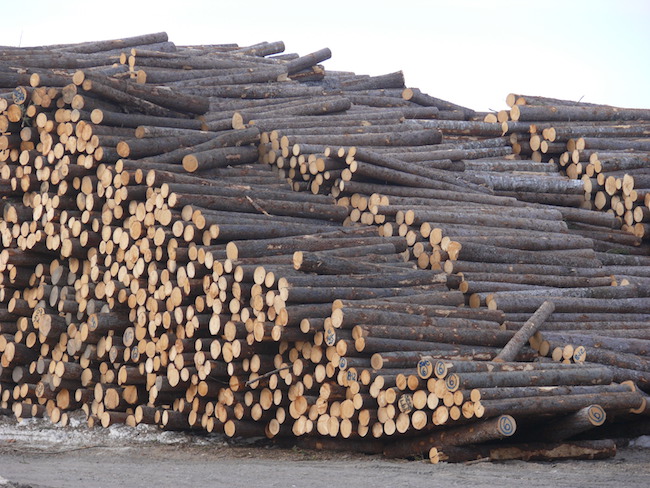
Features
Financial Reports & Markets
Paper
Pulp
Editorial: Softwood lumber standoff continues
June 14, 2021 By Kristina Urquhart
 Photo: Annex Business Media
Photo: Annex Business Media The U.S. Department of Commerce (DOC) is at it again. On May 21, the DOC recommended a combined countervailing and anti-dumping duty of 18.32 per cent on Canadian softwood lumber imports after a second administrative review — more than doubling the current rate of 8.99 per cent for “all others” producers.
The doubling-down is not set in stone until the department produces a final review in the fall, but if it feels like déjà vu, that’s because it is. The DOC reviews its anti-subsidy (countervailing) and anti-dumping duties annually, and it was only in November 2020 that they established the current rate.
The battles tend to drag on: it was just last August that Canada was victorious in the World Trade Organization’s appeals court after a dispute on U.S. duty rates from 2017.
Since 1982, the crux of the softwood lumber file has been that U.S. lumber producers believe Canadian stumpage fees set by and paid to the provinces unfairly “subsidize” our producers, while U.S. prices abide by their competitive private market. The tariff disputes that have been ongoing since the last Softwood Lumber Agreement (SLA)’s expiry in 2015 have been backed by the U.S. Lumber Coalition, which represents American producers.
The protectionism evident in this new proposed rate jump has already become a hallmark of the Biden camp, but really, this administration has been no different from the governments before it. It’s America first, and that’s certainly part of what’s behind this latest possible hike. Slap Canadian producers with more tariffs to give U.S. woodlot owners a perceived leg up.
But America first is not necessarily America better. The National Association of Home Builders, for example, a U.S.-based advocacy organization, has been very vocal about the fact that such hefty duties on Canadian softwood drive up the prices in the U.S., too, ultimately hurting American consumers.
In 2008-09, disputes over the then-SLA, coupled with the economic downturn, pummelled British Columbia’s forestry sector, which never fully recovered (until it blew wide open during the pandemic, that is).
So what do increased tariffs do to long-term demand for Canadian producers in a post-COVID world, once lumber prices flatten and consumer demand begins to wane? If sawmills start to suffer again, we know where that leaves the pulp and paper industry.
All levels of Canadian government and supporting organizations stress the need for a new agreement, and express their frustration not only at the flip-flopping rates, but also at the rates themselves.
B.C. remains the largest Canadian exporter of softwood lumber to the U.S. and supports about 100,000 jobs in the province. As news came down from the DOC in May, Susan Yurkovich, president of the B.C. Lumber Trade Council, said, “Our strong hope is that the U.S. industry will end this decades-long litigation and instead work with us to meet demand for the low-carbon wood products the world wants, including American families. Until then, we will continue to vigorously defend our industry against these meritless allegations.”
It’s time for a new chapter, and we know that Canada and the U.S. can work together well. Other partnerships are finding a way – the $3-billion Paper Excellence-Domtar acquisition attests to that. To have a once-Canadian, now U.S.-owned organization picked back up by a Canadian company – well, that’s one win for our pulp and paper industry.
In another win, check in with the champs in our second annual Top 10 Under 40 contest. These young leaders are thoughtful and curious, and they are already master collaborators. They make the future of pulp and paper look pretty promising.
This article appears in the Summer 2021 edition of Pulp & Paper Canada.
Print this page